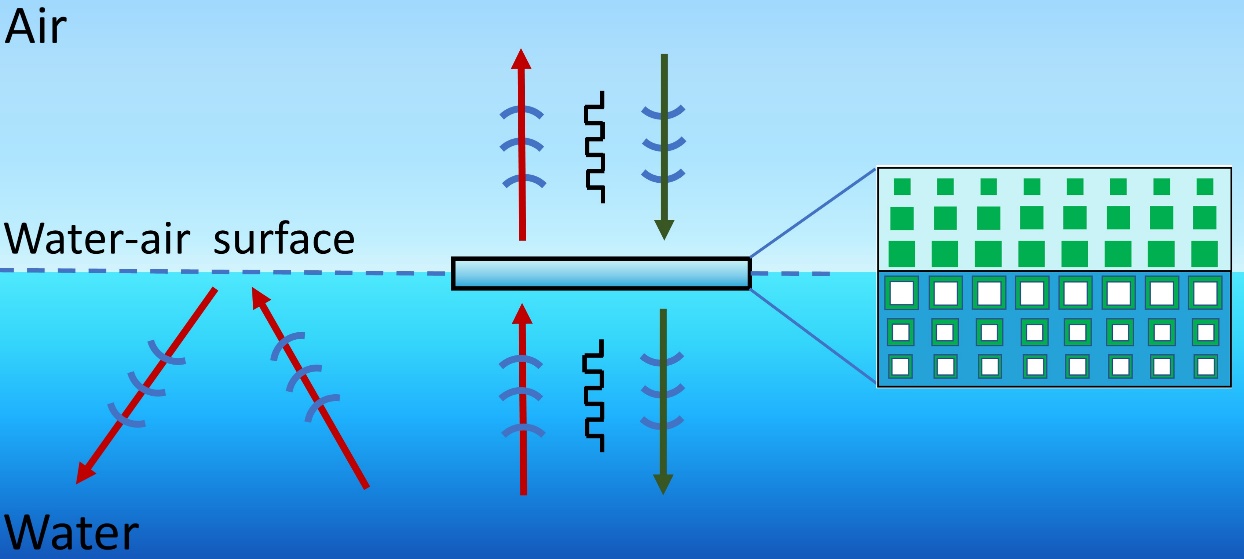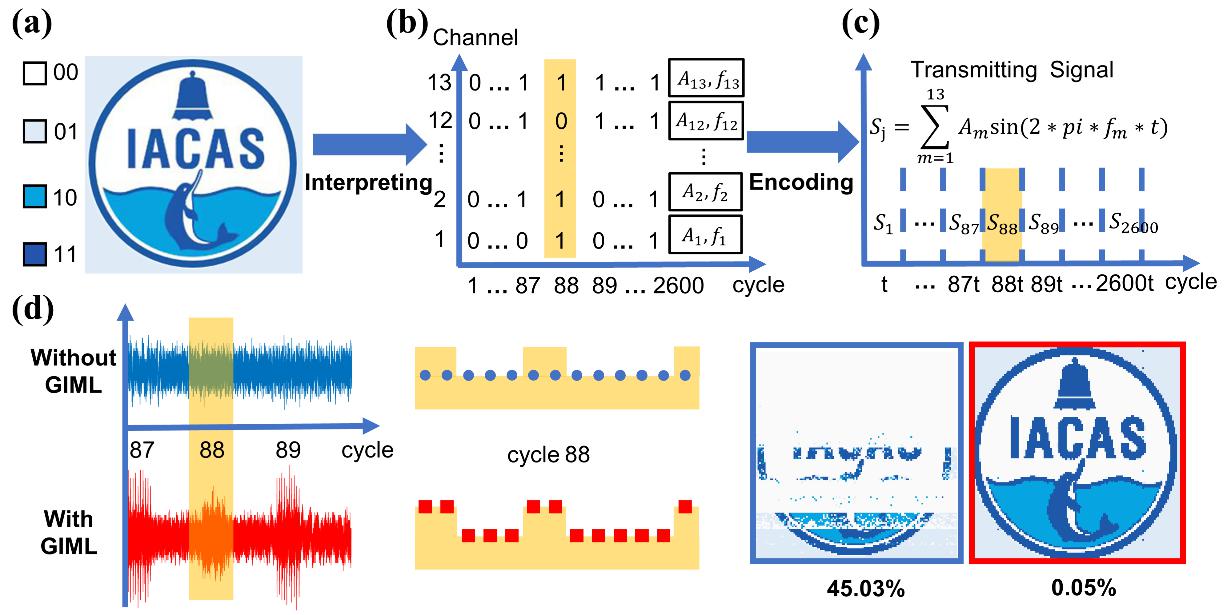With the increasing demand for the exploration and utilization of marine resources, achieving direct and efficient communication between water and air has been an urgent need. Sound waves, as the only propagation way with low attenuation in both water and air, has been considered to be the most practical way to achieve water-air communication.
However, previous studies can only realize the narrow-band sound transmission based on resonance, which greatly limits the communication capacity and efficiency.
To achieve efficient water-air acoustic communication, researchers from the Institute of Acoustics, Chinese Academy of Sciences(IACAS), combined the air-based and water-based metafluids to realize an exponential gradient impedance matching layer for broadband water-air sound transmission.
The study was published in Applied Physics Letter on November 6, 2023.
By cooperatively adjusting the sound velocity and thickness in the matching layers, researchers modulate the required acoustic parameters of the gradient impedance matching layer into an achievable range, which promises the realization of the water-air GIML.
Researchers construct the designed matching layer sample and measure the sound transmission enhancement in a water tank. Experimental results show that the proposed matching layer can achieve an average sound energy transmission enhancement above 16.7dB from 880Hz to 1760Hz across the water-air interface.
Researchers further select a multicolor picture and encode it on the transmission frequency band of the impedance matching layer. The encoded signals are emitted in the air and received in the water. The results show that the received picture through the bare interface can hardly be recognized with a bit error rate up to 45.03%, while the received picture through GIML is almost the same as the target picture with a negligible bit error rate of 0.05%. The broadband impedance matching between air and water can promote the applications in water-air acoustic communication.
This work provides a typical example for the design and realization of the broadband impedance matching between extreme media like water and air. Moreover, the achieved broadband water-air sound transmission has important application prospects for numerous ocean exploration applications and underwater sound pollution reduction.

Fig. 1 Schematic of water-air acoustic communication enabled by the proposed gradient impedance matching layer. (Image by IACAS)

Fig. 2 Experimental demonstration of water-air acoustic communication based on broadband impedance matching. (Image by IACAS)
Reference:
ZHOU Ping, JIA Han, BI Yafeng, YANG Yunhan, YANG Yuzhen, ZHANG Peng, YANG Jun. Water-air acoustic communication based on broadband impedance matching. Applied Physics Letter, 123, 191701 (2023). DOI: 10.1063/5.0168562
Contact:
ZHOU Wenjia
Institute of Acoustics, Chinese Academy of Sciences, 100190 Beijing, China
E-mail: media@mail.ioa.ac.cn


